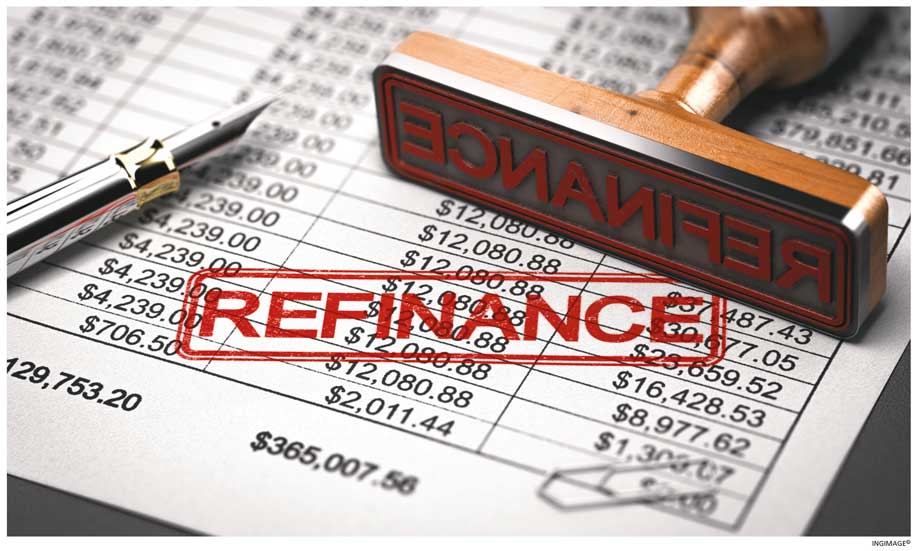THE ECONOMIC CRISIS
PATH OUT OF THE DEBT TRAP
Shiran Fernando notes that there are several difficult decisions policy makers need to take

The IMF’s report titled ‘Article IV’ was released in March; and it highlighted several critical issues that Sri Lanka’s economy is facing. Article IV is similar to an annual health check whereby member nations undergo a screening of their economic performance.
This report confirms many of the concerns that economists have highlighted over the past 12-24 months in the context of Sri Lanka’s fiscal and debt trajectory being unsustainable. In 2022 alone, the International Monetary Fund projects that Sri Lanka has to service around US$ 7 billion in debt, which will be difficult given its low level of reserves (US$ 1.9 billion at the end of March).
HEALTH CHECK The report notes that in the view of IMF staff, Sri Lanka’s public debt is unsustainable. It states that even with excessive fiscal consolidation, the economy is saddled with a solvency issue.
Article IV declares: “Fiscal consolidation efforts necessary to bring down debt over the coming years to safe levels would be too large to be economically and politically feasible.”
Public debt constitutes central government debt, guaranteed debt, and the Central Bank of Sri Lanka’s foreign liabilities and international currency swaps.
The public debt to GDP ratio increased from 93.6 percent at the end of 2019 to 113.6 percent by end-September 2021. This was a result of a fiscal deficit widening following the tax cuts in late 2019, the impact of the COVID-19 pandemic, currency depreciation, and debt issued to state owned enterprises (SOEs) and guarantees, as well as an increase in the Central Bank’s liabilities by way of swap arrangements such as those with Bangladesh and China.
DEPRECIATION According to the IMF’s baseline projection, public debt will end up at 125.3 percent of GDP by 2026. Due to the near 50 percent depreciation recorded in March (following the free float of the Sri Lankan Rupee against the US Dollar) however, this projection could be much higher.
Article IV also states that the debt trajectory is sensitive to exchange rate shocks.
PRESCRIPTION The IMF highlights the need for a credible and coherent strategy that will reinstate confidence, in both the short and medium terms.
This involves substantial revenue-based fiscal consolidation, a strategy to restore debt sustainability, tightening monetary policy in the light of spiralling inflation, gradual flexibility of the currency (to make it more market determined) and development of social safety nets to protect those who are vulnerable to negative macroeconomic adjustments.
In terms of revenue-based fiscal consolidation, this would mean a rollback of the tax cuts that were announced in 2019. It would also mean higher VAT rates and low thresholds, the reintroduction of withholding tax and potentially higher corporate taxation rates.
What’s more, this macroeconomic adjustment will have to be accompanied by curtailing unnecessary expenditure and being efficient in spending on what is deemed to be absolutely necessary.
In terms of monetary policy, the Central Bank tightened policy rates by one percent in early March, followed by a whopping 700 basis points increase not long after, in view of inflation galloping well above double digits.
Improvements on the fiscal front will reduce the quantum of money printing by the Central Bank of Sri Lanka, which it does to finance operations of the Treasury as well as bridge the deficit.
A sudden floating of the currency in early March – without reserves to defend it and a loss of confidence – has seen a slump in the value of the rupee.
To arrest this overshoot in the currency and bring a sense of relative normalcy, the government will have to take swift steps to negotiate reform programmes with the IMF and commence debt restructuring – given that the International Monetary Fund has announced that the country’s debt is unsustainable.
If the process is followed efficiently, Sri Lanka will be able to put on hold some of the debt repayments that are due in the next three or four years and utilise the foreign exchange saved to pay for fuel, medicines and other essentials that are desperately needed by the public, as well as to run the economy.
The IMF also highlighted the need to focus on structural reforms that will boost growth.
There must also be a focus on areas that policy circles and economic discussions have revolved around in terms of increasing female labour force participation, reducing youth unemployment, liberalising trade, developing a coherent investment promotion strategy, restructuring price controls and instituting reforms related to SOEs.
As we approach the midpoint of 2022, the second half looks extremely uncertain. Indeed, there are several difficult decisions policy makers need to take to change course and ensure that people’s basic needs are met.




Leave a comment